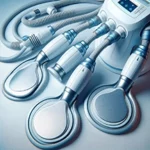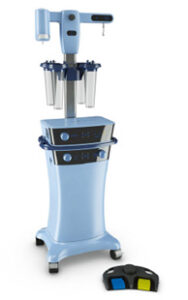Introduction: Liposuction vs Coolsculpting
Liposuction vs coolsculpting is actually a common concern of patients desiring improvement in contour. Liposuction is a surgical procedure that involves removing fat from localized or generalized areas of the body using hollow cannulas that are placed in the deep fat layer. Liposuction can be performed with and without general anesthesia depending on the extent of fat removal desired.
In contrast, Coolsculpting involves the elimination of fat from localized areas by the placement of cooling paddles on the skin. The fat is frozen to death without killing the overlying skin. In essence, cooling therapy or cryotherapy is used to freeze off the superficial fat layer; once the fat cells die, they are reabsorbed by your own body without any further intervention. Letus now explore the topic, “liposuction vs coolsculpting.”

Advantages and Disadvantages of Coolsculpting
The obvious advantage of Coolsculpting is that it can be performed in the office setting with no need for anesthesia! Unfortunately, the disadvantages of Coolsculpting are numerous. First, patients are limited to treating focal areas that can fit under the cooling paddles. Some patients have also complained about the treatment being painful. Another disadvantage is that improvement in concerned areas is only partial with studies claiming a 20% correction.
The worst disadvantage remains the fact that a few patients who have observed weight gain following the procedure may see a paradoxical growth of fat in the areas treated! This overgrowth of fat cells in treated areas has been characterized as paradoxical adipose hyperplasia or PAH. PAH has now been studied and isolated the overaggressive growth of deep fat cells that are now void of the overlying protective superficial fat layer.
It seems that once the superficial fat layer has been removed by Coolsculpting, the underlying fat has no pushback and will grow preferentially to the deep fat with a preserved superficial fat layer. In contrast, liposuction surgery is typically performed in the deeper fat layer. When patients experience moderate weight gain following liposuction surgery, they do not observe the same localized weight gain in the areas that have been liposuctioned. In fact, they notice only a modest increase in prominence in areas not liposuctioned.
Liposuction vs CoolSculpting: Comparing Two Fat Reduction Procedures
When diet and exercise fail to remove stubborn fat pockets, body contouring treatments like liposuction and CoolSculpting can help. But what are the key differences between these two popular fat reduction procedures?

How Does Liposuction Work?
Liposuction removes fat cells from targeted areas via tiny incisions in the skin. A plastic surgeon inserts a thin tube called a cannula connected to a vacuum to loosen and suction out the fat. Techniques include tumescent liposuction, laser-assisted, power-assisted, and ultrasound-assisted.
Benefits of liposuction:
- Permanently eliminates treated fat cells.
- Provides dramatic, sculpted results.
- Also tightens loose, sagging skin.
- Treats large areas effectively.
Downsides of liposuction:
- Invasive procedure with incisions and anesthesia.
- Involves significant downtime for recovery.
- Results take 2-3 months to fully see as swelling resolves.
How Does CoolSculpting Work?
CoolSculpting uses cryolipolysis to gently freeze and destroy fat cells without surgery or anesthesia. A device applies controlled cooling to the treatment area, crystallizing the fat which is then eliminated naturally by the body over 1-3 months.
Advantages of CoolSculpting:
- Non-invasive, no incisions or anesthesia required.
- Minimal discomfort, no downtime needed.
- More natural-looking results.
- Can treat some small areas that liposuction cannot.
Drawbacks of CoolSculpting:
- Gradual results take weeks to months to appreciate.
- Multiple sessions are usually required for each area.
- Not as dramatic improvements as liposuction.
- Only treats modest fat bulges.
Liposuction vs Coolsculpting: Ideal Candidates for Each Procedure
Good candidates for liposuction include:
- Those with good skin elasticity.
- Individuals close to their ideal weight.
- Patients requiring fat removal from larger areas.
- People want dramatic contouring with skin tightening.
Good CoolSculpting candidates:
- Patients are bothered by modest fat bulges.
- Those wanting subtle enhancements, not dramatic change.
- People unable or unwilling to have surgery.
- Areas too small for liposuction.
An experienced provider can help determine which treatment option makes sense for your unique goals.
Cost Comparison
On average:
- Liposuction costs $2,500 – $8,000 per area treated.
- CoolSculpting costs $600 – $1,500 per applicator per session.
Liposuction requires just one procedure but provides more dramatic improvements. CoolSculpting involves multiple sessions for more subtle changes over weeks to months.
Which is Better – Liposuction vs CoolSculpting?
In general:
- Liposuction works better for larger areas and more dramatic contouring.
- CoolSculpting suits smaller fat pockets where modest reduction provides minimal enhancement.
However, the treatment option depends entirely on each patient’s specific goals, concerns, body areas, and budget. A board-certified provider can guide you on the optimal treatment plan for your needs and desired outcome.
Conclusion: Liposuction vs Coolsculpting
While both liposuction and CoolSculpting effectively reduce unwanted fat, they differ significantly in their methods, results, downtime, and cost. Consulting with an experienced cosmetic provider allows individuals to understand the pros and cons of each option. This empowers patients to make an informed choice between liposuction vs CoolSculpting for their fat reduction goals. In some cases, Coolsculpting revision options are often needed for a deformity, called paradoxical adipose hyperplasia that requires ultrasound assisted liposuction to correct to revise.
If you are wondering if you should have liposuction vs coolsculpting, I have your answer. I would only undergo Coolsculpting if I had a localized problem area that I wanted partially improved and if I was disciplined enough to avoid future weight gain. If you are considering liposuction vs coolsculpting, let our specialists offer you their expert advice following a complimentary consultation.

